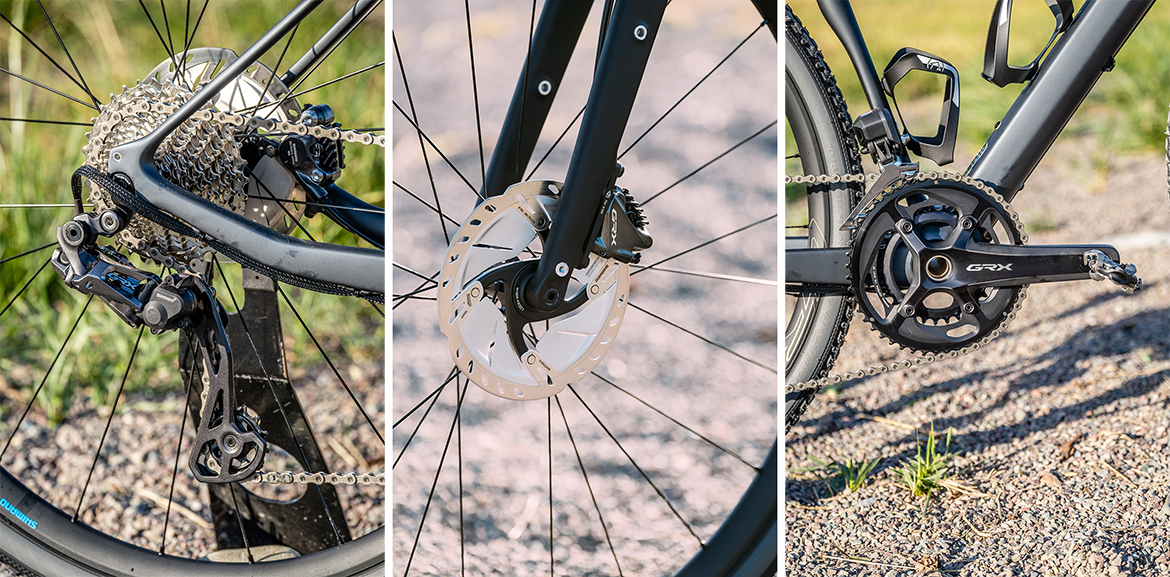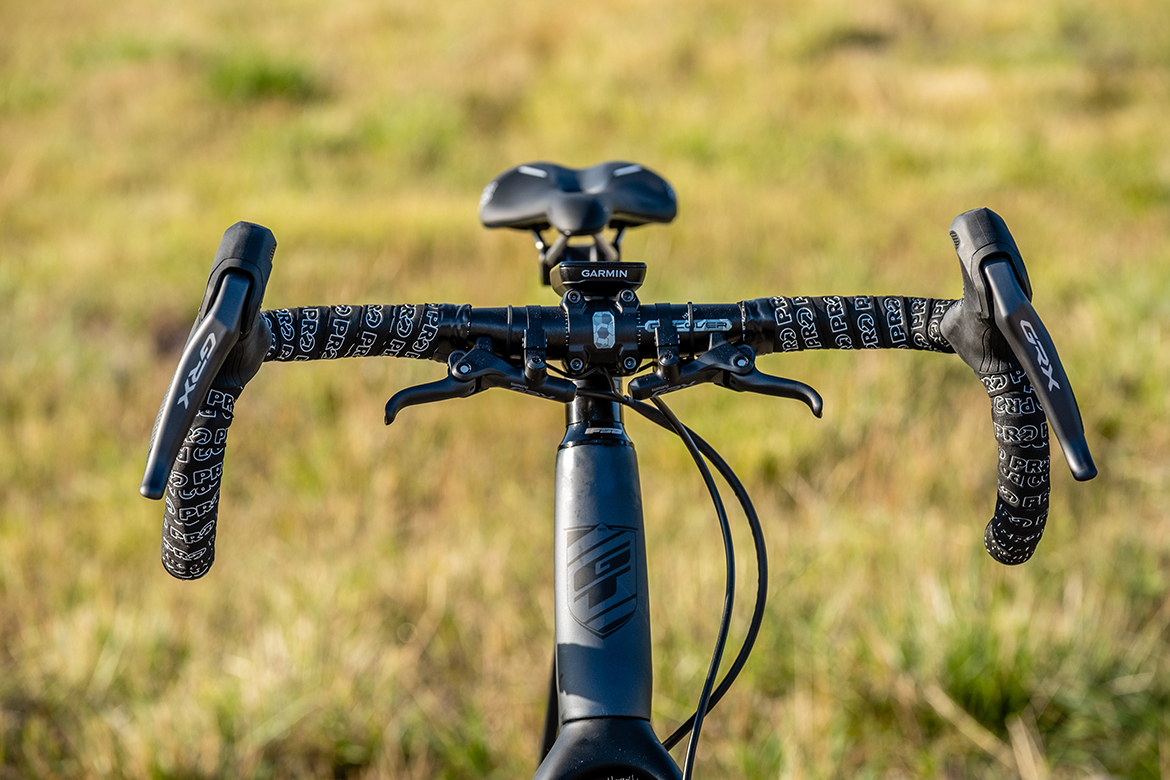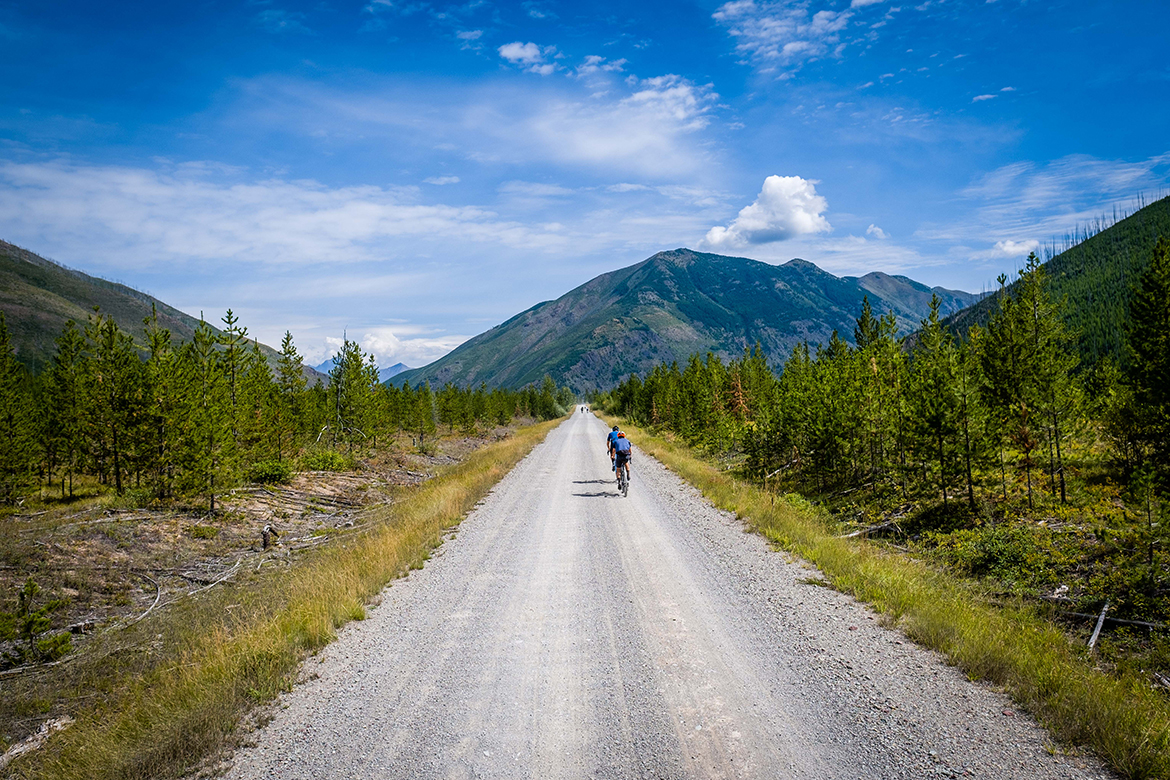Can Shimano GRX Save the Touring Drivetrain?
There was a time, not so long ago, when mountain and road drivetrain parts from the world’s biggest manufacturer played nicely together. Road brifters had no problem shifting a mountain derailer, and flat-bar trigger shifters could pull cable on a road setup. Product managers could find a nice set of 3×9 brifters and pair them with a wide-range triple up front and any available mountain bike 9-speed cassette and bang, you’ve got a nice 20-gear–inch(-ish) low end with plenty of top-end grunt for long descents.
Those halcyon days ended in 2010 when Shimano introduced its “Dyna-Sys” 10-speed mountain bike drivetrain, which used a new pull ratio and set the brand’s road and mountain parts spinning off in different directions. This meant you were either stuck with 9-speed even as drivetrains started sprouting gears like weeds after rain (Shimano still produces the M772 XT rear derailer for this purpose), or you had to start fidgeting. Barcons are an option, as are Gevenalle shifters or thumbies. So too could you fit a Tanpan from Wolf Tooth Components, which alters the pull ratio and allows 10- and 11-speed road and mountain shifters to play nice.
The emergence of “gravel” as a cycling category in the last few years gave product managers another tool — super-compact double cranksets like the Praxis Alba offered up 48/32T ring combos that, when paired with with a 32T or 34T cog at the top of a cassette, could begin to offer gearing appropriate for nearly any hill … so long as you weren’t carrying more than a couple of water bottles. Touring bikes continued to slog along with low-end 3x9s, with stalwarts like the Salsa Marrakesh and Trek 520 offering brifters, sure, but limited to Alivio- and Sora-level components. Burly, but not burnished.
(Despite its 1:1 pull ratio, SRAM seems generally uninterested in the traditional touring market, especially in the last few years as the brand drops front derailers entirely. Their Eagle drivetrains have revolutionized what’s possible when bikepacking, and their new wireless AXS groups offer an intriguing — but extremely expensive — mix-and-match possibility.)

Nearly a decade after pulling the pin on cross-compatibility, Shimano launched an entirely new category of components earlier this year called GRX. Pitched as a “Gravel/Adventure” group, it has 10- and 11-speed variants in both mechanical and electronically shifted configurations. Last month I went a few hours north to Whitefish, Montana, to ride the new group for a few days on roads and trails just off the Great Divide Mountain Bike Route and get an early sense of whether this new groupset has the potential to close the gap that Shimano opened for adventure cyclists years ago.
Full disclosure: Adventure Cyclist’s former Technical Editor Nick Legan, who went to work for Shimano around the time of GRX’s launch, extended the invite.
As mentioned, Shimano offers GRX as 10- and 11-speed cassette configurations, and it only gets more complicated from there. The 11-speed can be outfitted as a 1x or 2x with a different derailer tapped depending on the number of chainrings. And while the 1x option can handle up to a 42T cog out back, the 2x is limited to a 34T. Up front? The lower-spec RX600 series only comes in a 40T and the higher-zoot RX800 series crank can use 40T or 42T for 1x. The doubles offer a 46/30T in the 600 series or 48/31T combo on the 800. The 10-speed configuration (RX400 series) only comes in a 2×10 with a 46/30T up front and a max rear cog of 36T.
Complicating matters further is that most cyclists have become accustomed to pricing and quality generalities based on Shimano’s long-standing offerings. Is this XTR/Dura-Ace level? Too rich for my blood. Alivio/Sora? Please. Well, GRX slots in around Tiagra for the 400-level components and Ultegra for the 800-level option (the 600-level matches 105). And combined with the lowest-possible gear option of 30-36T, the 400 level potentially holds the most potential for loaded touring with a gear inch down around 22 on 700c x 32mm tires. That’s not bad, and when you consider some other perks that come with GRX, it starts to look downright interesting.
First, this is a hydraulic-brake–only group, so product managers are either spec’ing pretty nice disc stoppers here or mixing and matching another road lever (mechanical 105 seems common on early 2020 bikes we’re seeing) to actuate mechanical disc calipers. But if your new ride rocks GRX brifters, a modified pivot position (Di2-level only) makes the levers noticeably easier to use from on top of the hoods. If you keep pedaling after the tarmac ends, this really is a game changer. After spending a couple of days on a GRX-equipped bike, I can say with confidence that they’re the best brifters I’ve ever used by a wide margin — the ergonomics and brake levers really are that good.

GRX also offers clutched derailers to keep chain slap to a minimum, flat-mount calipers for most modern gravel and gravel-adjacent bikes, and nifty “sub” brake levers mounted on the tops like cyclocross levers. These mini brakes are part of the closed hydraulic system, so I’m told you still bleed them like normal from the main levers and the “subs” are simply part of the line. Practically, I found them handy on short undulations in climbs where I was comfortable on the tops without needing to shift, but the ability to make a little panic stop was appreciated. The downside is that with a more crowded cockpit, many handlebar bags are going to be out of the running. I was unable to use a North St. Bags option I like for day rides, and even a Revelate Feed Bag was a bit of a challenge to strap on without interfering with the levers.
The group also includes a GRX wheelset available in 700c and 650b diameters. The sizes share a tubeless design, 24 spokes, thru-axles, 21.6mm internal widths, and Centerlock disc mounts. The 650b wheel and RX400 2×10 would be the lowest possible gearing option in a complete GRX build.
My time riding the group has been aboard a new GT Grade, which had its stock Tiagra group upgraded to the top-end GRX 2×11 Di2 group by a blue-shirted brigade of Shimano techs. Point being, this bike was built by real pros, and it shows. And while most touring cyclists won’t spring for the electronic Di2 shifting, we do hear from plenty of riders with hand issues, such as arthritis, who prefer the light touch of a Di2 button over the full-on push of a mechanical shift. Still, it ain’t cheap, nor is it probably much sought after by most.

All that said, I did plenty of shifting in Northwest Montana as a pair of tough rides on varied surfaces pushed both bike and rider in a big late-season effort. I bottomed out the 31-34T low end for sustained climbs and even managed to spin out the 48-11T on one long tarmac decent, but for the most part kept the front derailer firmly positioned in the smaller ring. Shimano’s shifting is always precise, but Di2 is on another level with every shift perfectly falling into place with a pleasant little whir from the servo motors. Honestly, it’s a bit addicting — ride Di2 at your wallet’s peril.
So like SRAM’s Eagle drivetrain more or less banished the front derailer on mountain bikes to the dust bin of history, can GRX put the triple out to pasture? Not quite. If you’re a credit card tourist or committed to fast-and-light packing, GRX is an intriguing option for your next ride — especially if your steed pulls double duty as an unloaded backroad, cyclocross, or supported event bike. But if you’re packing for the roads barely traveled or prefer a pile of creature comforts, GRX just can’t match the low end gearing offered by an old-school 3×9 rocking the very best 2009 had to offer. Truth is though, that’s not most cyclists — not even most adventure cyclists. And for those of us only touring on occasion and limited by space on the rack or the credit card to a slimmed-down stable of bikes, something sporting 40mm of rubber and a GRX 2x drivetrain offers a path to almost anywhere.

